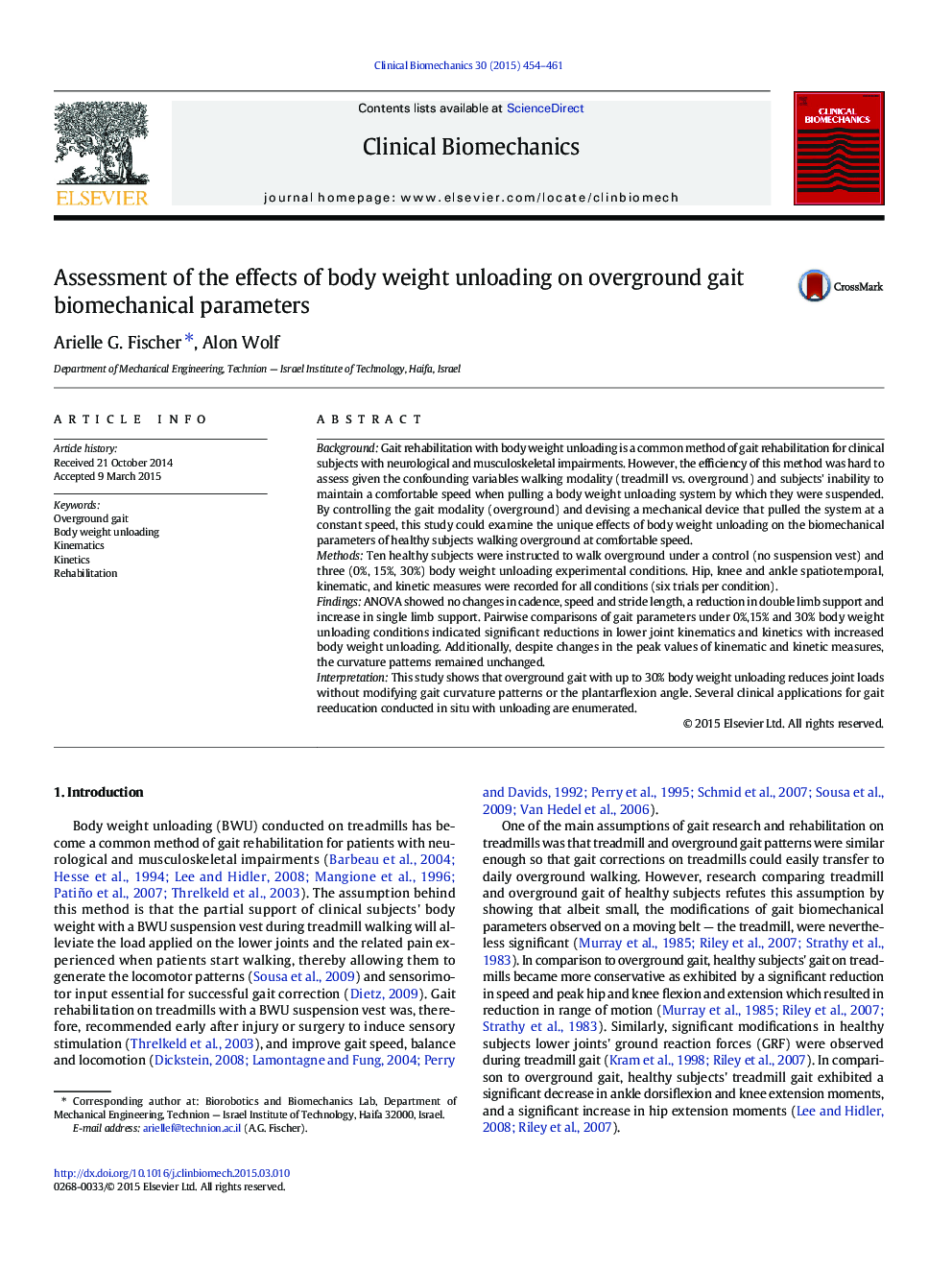| Article ID | Journal | Published Year | Pages | File Type |
|---|---|---|---|---|
| 6204792 | Clinical Biomechanics | 2015 | 8 Pages |
â¢Assess the effects of body weight unloading on gait biomechanical parametersâ¢Control interaction of treadmill gait with unloading by studying gait overgroundâ¢Body weight unloading increased single limb support and reduced double limb support.â¢Unloading changed kinematics and kinetics without affecting gait curvature patterns.â¢Clinical applications of gait reeducation with body weight unloading are suggested.
BackgroundGait rehabilitation with body weight unloading is a common method of gait rehabilitation for clinical subjects with neurological and musculoskeletal impairments. However, the efficiency of this method was hard to assess given the confounding variables walking modality (treadmill vs. overground) and subjects' inability to maintain a comfortable speed when pulling a body weight unloading system by which they were suspended. By controlling the gait modality (overground) and devising a mechanical device that pulled the system at a constant speed, this study could examine the unique effects of body weight unloading on the biomechanical parameters of healthy subjects walking overground at comfortable speed.MethodsTen healthy subjects were instructed to walk overground under a control (no suspension vest) and three (0%, 15%, 30%) body weight unloading experimental conditions. Hip, knee and ankle spatiotemporal, kinematic, and kinetic measures were recorded for all conditions (six trials per condition).FindingsANOVA showed no changes in cadence, speed and stride length, a reduction in double limb support and increase in single limb support. Pairwise comparisons of gait parameters under 0%,15% and 30% body weight unloading conditions indicated significant reductions in lower joint kinematics and kinetics with increased body weight unloading. Additionally, despite changes in the peak values of kinematic and kinetic measures, the curvature patterns remained unchanged.InterpretationThis study shows that overground gait with up to 30% body weight unloading reduces joint loads without modifying gait curvature patterns or the plantarflexion angle. Several clinical applications for gait reeducation conducted in situ with unloading are enumerated.
